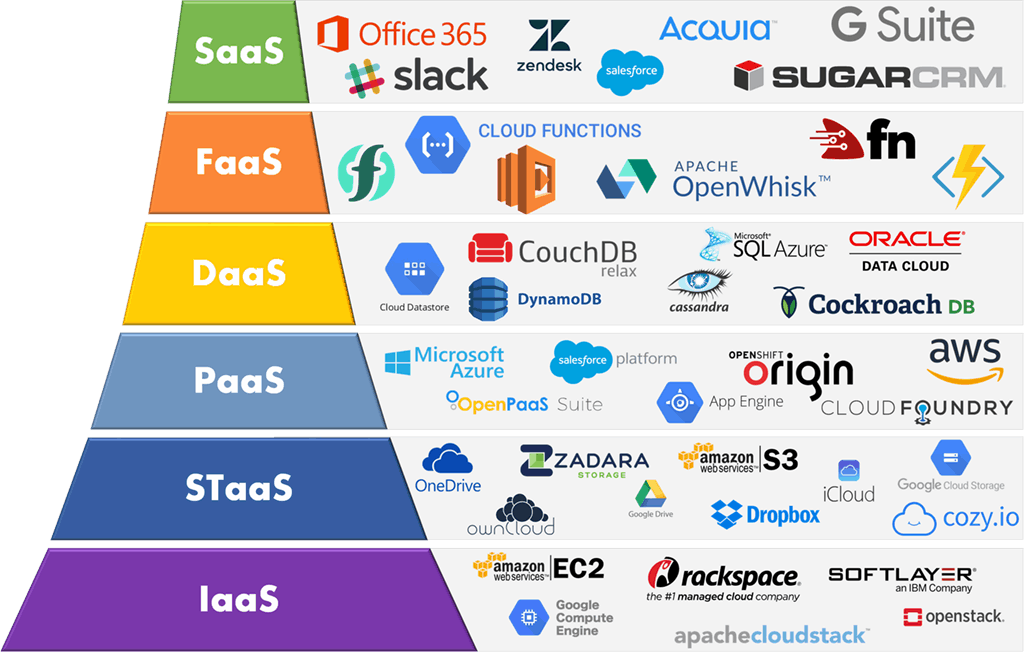Achieve Seamless Scalability With Cloud Provider
In the ever-evolving landscape of cloud solutions, achieving smooth scalability stands as a foundation for modern organizations seeking to remain adaptable and competitive. The capability to easily increase or acquire sources in response to changing demands is an essential advantage in today's hectic digital setting. By understanding the art of scalable cloud solutions, companies can not only maximize performance and enhance procedures but additionally lead the way for future growth and development. The mission for smooth scalability with cloud services unveils a world of possibilities for those going to accept the transformative power of vibrant resource administration.
Advantages of Cloud Scalability
Cloud scalability supplies organizations the versatility to dynamically adjust sources based on need, making certain ideal efficiency and expense effectiveness. One vital benefit is the ability to scale sources up or down swiftly in feedback to fluctuating work. This dexterity enables businesses to satisfy changing client needs without over-provisioning resources, ultimately bring about cost financial savings. Scalability likewise boosts performance by making certain that systems can deal with increased traffic or work without experiencing downtime or downturns. By effectively alloting sources, companies can maintain high levels of efficiency throughout peak times without unnecessary expenses during quieter periods. Additionally, cloud scalability advertises advancement and trial and error by allowing organizations to quickly check originalities and scale them as needed. This versatility motivates a culture of constant enhancement and adaptation, allowing organizations to stay competitive in a rapidly advancing market landscape. Inevitably, the advantages of cloud scalability expand past cost savings to encompass enhanced performance, dexterity, and advancement.
Key Features for Scaling
Reliable scaling in cloud services relies upon essential features that make it possible for companies to change sources dynamically based on need. One vital feature for scaling is elasticity, enabling resources to scale up or down in action to varying workloads. This makes certain that organizations can satisfy performance requirements without over-provisioning resources. An additional key function is scalability, making it possible for systems to take care of raised work by adding sources seamlessly. This function is critical for fitting development without compromising efficiency. Furthermore, automation plays an important duty in scaling by automating the provisioning and de-provisioning of sources based on predefined plans. Automation minimizes human treatment, boosts efficiency, and guarantees quick reaction to changing needs. Surveillance and analytics devices are also crucial for scaling, providing understandings right into resource utilization, efficiency metrics, and prospective bottlenecks. These tools allow organizations to make informed decisions and optimize resource allotment for efficient scaling. In general, these vital features jointly encourage organizations to attain seamless scalability in cloud services.
Implementing Auto-Scaling Methods
To successfully enhance resource allowance and adapt to differing work, companies have to tactically see this site execute auto-scaling techniques in their cloud services facilities. Auto-scaling allows systems to instantly change the number of compute sources based upon real-time demand. There are numerous auto-scaling strategies that companies can use, such as predictive scaling, which uses historical data to forecast future source needs, and responsive scaling, which replies to present workload changes.

Finest Practices for Scalability
For organizations aiming to boost their scalability in cloud solutions, carrying out ideal methods is essential for optimal efficiency and resource monitoring. One secret best practice is creating applications with a microservices architecture. This strategy breaks down applications into smaller, independent solutions that can be released, upgraded, and scaled individually, allowing for greater flexibility and scalability.
One more important method is using containerization modern technology, such as Docker or Kubernetes. Containers allow the packaging of applications and their dependences right into separated systems, making it simpler to scale parts independently and deploy them regularly throughout different atmospheres.
In addition, executing automated deployment and facilities as code (IaC) can improve scalability initiatives (linkdaddy cloud services). Automation devices like Terraform or Ansible aid in provisioning and managing resources effectively, decreasing hand-operated errors and making it find this possible for quick scalability
Furthermore, keeping track of efficiency metrics, establishing notifies, and performing regular capacity preparation are important methods to make certain proactive scalability administration. By adhering to these ideal practices, organizations can accomplish seamless scalability in their cloud solutions while optimizing performance and resource use.
Surveillance Performance Metrics
When examining the efficiency of cloud solutions scalability, very closely monitoring performance metrics is critical for guaranteeing optimal performance and source allotment. By constantly tracking essential performance indications (KPIs) such as action times, latency, source, and throughput use, organizations can acquire valuable understandings right into the health and wellness and effectiveness of their cloud infrastructure. Monitoring performance metrics permits the very early detection of potential traffic jams or issues that might impact scalability, enabling positive procedures to be taken to resolve them prior to they escalate.

Verdict
To conclude, achieving smooth scalability with cloud Get More Info services is necessary for organizations to optimize performance, boost technology, and keep high efficiency degrees throughout peak times. By leveraging the advantages of cloud scalability, carrying out auto-scaling methods, using essential functions such as elasticity and automation, and adhering to finest techniques like application design and performance surveillance, services can efficiently scale their systems while making the most of resource utilization and efficiency.
The mission for smooth scalability with cloud solutions introduces a world of possibilities for those prepared to embrace the transformative power of vibrant source management.
Cloud scalability supplies organizations the flexibility to dynamically adjust sources based on demand, ensuring ideal efficiency and price effectiveness. Another crucial feature is scalability, making it possible for systems to deal with raised work by adding sources flawlessly.For organizations intending to enhance their scalability in cloud solutions, carrying out best methods is important for ideal performance and source management.When assessing the efficiency of cloud services scalability, very closely keeping an eye on efficiency metrics is critical for making sure ideal performance and source allocation.